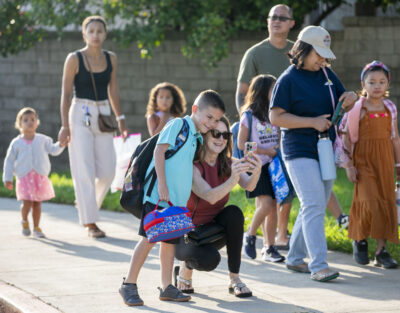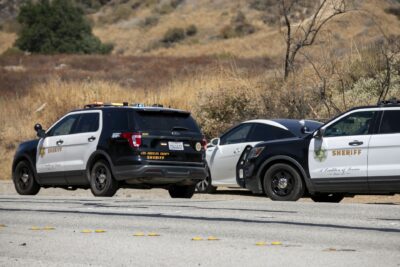Table of Contents:
- Introduction
- What’s a First Aid Certificate Card?
- Can You Get a First Aid Certificate Card Without a Practical Exam?
- How to Know If a First Aid Certificate Card Is Valid
- What to Look for in an Online First Aid Course
- A Practical Exam Isn’t Always Required
First aid has moved from nice-to-know to need-to-know. With the global first aid market expected to grow from $4.77 billion in 2024 to over $6 billion by 2030, more people than ever are getting certified. Whether it’s for work, travel, or personal peace of mind, a first aid certificate card shows you’re ready to step up when it counts.
Take road accidents, for example. According to the Global Status Report on Road Safety 2023, traffic-related deaths have dropped slightly to 1.19 million, but that’s still one death every 26 seconds. That’s why first aid training matters.
If you’re not comfortable with hands-on testing, you might be wondering: Can you earn that card without doing a practical exam? Here’s what you need to know.
What’s a First Aid Certificate Card?
Think of it as your proof of training: a wallet-sized card that shows you’ve completed a certified first aid course. It usually includes your name, the type of training you’ve completed (such as Cardiopulmonary Resuscitation, CPR, or wound care), and the dates your certification started and expires.
People carry it for good reason. Whether you’re on the job or stepping in during an emergency, it’s a simple way to show you’re trained and ready to help.
Can You Get a First Aid Certificate Card Without a Practical Exam?
Yes, you can get a first aid certificate without a practical exam through 100% online courses. However, most in-person classes do require a hands-on skills test for certification. Let’s look at how the online first aid certificate works and where it’s accepted.
How Online First Aid Certification Works Without a Practical Exam
Most fully online courses follow a simple, structured format. You log in and move through short modules that teach skills like CPR, choking response, bleeding control, and more. You will see visual demonstrations and step-by-step breakdowns of what to do in actual emergencies.
There are short quizzes throughout to make sure you are following along, and at the end, a final test, usually multiple choice or scenario-based. If you pass, you’re certified. That’s it. No driving to a class. No physical test. Just training that fits into your day.
Is It Still Valid?
Yes, online certification without a practical exam is valid in many settings, but there are exceptions.
If you’re getting certified for general preparedness, travel, babysitting, volunteering, or most office-based jobs, an online certificate card is often enough. Reputable online courses follow national safety standards and include the same content you’d learn in person.
However, if your job involves direct patient care, child supervision, or licensing requirements, you might need an in-person skills assessment. In those cases, some organizations offer a blended course: online learning followed by a short hands-on test.
Bottom line: Before you choose a course, check what your workplace or state requires. That way, you’ll know whether a 100% online course meets the mark.
How to Know If a First Aid Certificate Card Is Valid
A valid certificate card shows your full name, the exact course completed, who issued the card, when it was issued, and when it expires. Digital cards are common, and many providers let you print them or store them on your phone.
Most cards also include a QR code or ID number linked to an online verification page. That’s how employers and schools confirm if your certification is valid.
Will your card be accepted? Here’s a quick checklist:
- Look up the training provider and see if they offer a verification tool
- Check if the course follows recognized safety guidelines (like ECC, OSHA, or ILCOR)
- Ask your employer or licensing body if they accept online-only certifications
If the card is missing key details like the provider name, expiration date, or a way to verify, it’s a warning sign. Always review what’s included before you commit to any course.
What to Look for in an Online First Aid Course
You can get certified without a hands-on test, but only if the course is recognized. Use this checklist to stay on track:
It Should Follow Safety Standards
Look for a course that mentions OSHA, ECC, or ILCOR guidelines. These aren’t just buzzwords; they show the training meets national safety norms. If those names are missing, don’t trust the program.
The Certificate Needs to Show the Basics
A good certificate includes your name and basic details. It should also come with a QR code or ID number that leads to a real verification page. No details? That’s a problem. It may also be noncompliant and rejected by employers or regulatory bodies.
Training Should Be Based on Real-Life Events
Look for a course that teaches with real examples, not just reading material. Clear video demos, guided case studies, and practical breakdowns make a big difference when you need to act under pressure.
You Should Be Able to Reach Someone
If you get stuck or something breaks, you should be able to contact support. A solid course makes it easy to get help quickly, whether by phone, email, or chat. If support info isn’t listed, that’s a red flag.
The Provider Should Be Trusted
Check the provider’s history. Have they been around for a while? Are their certificates accepted by schools, workplaces, or licensing boards? A quick search or scan of reviews can save you from wasting time on a program that doesn’t count.
A Practical Exam Isn’t Always Required
Not always. It depends on how you plan to use your certification. If you are looking for a first aid certificate card for your work, you need a practical exam. In that case, look for a blended course with a short practical session. If you are doing it for personal use, a 100% online course is often enough. Also, it is much faster to complete.
Want extra confidence? Some people choose blended courses even when they’re not required, just to practice with an instructor. That’s completely optional, but can be helpful if you’re new to first aid.
Before enrolling, check with your employer, licensing board, or organization to make sure an online-only card is accepted in your situation. Explore online first aid training today and review your options.






